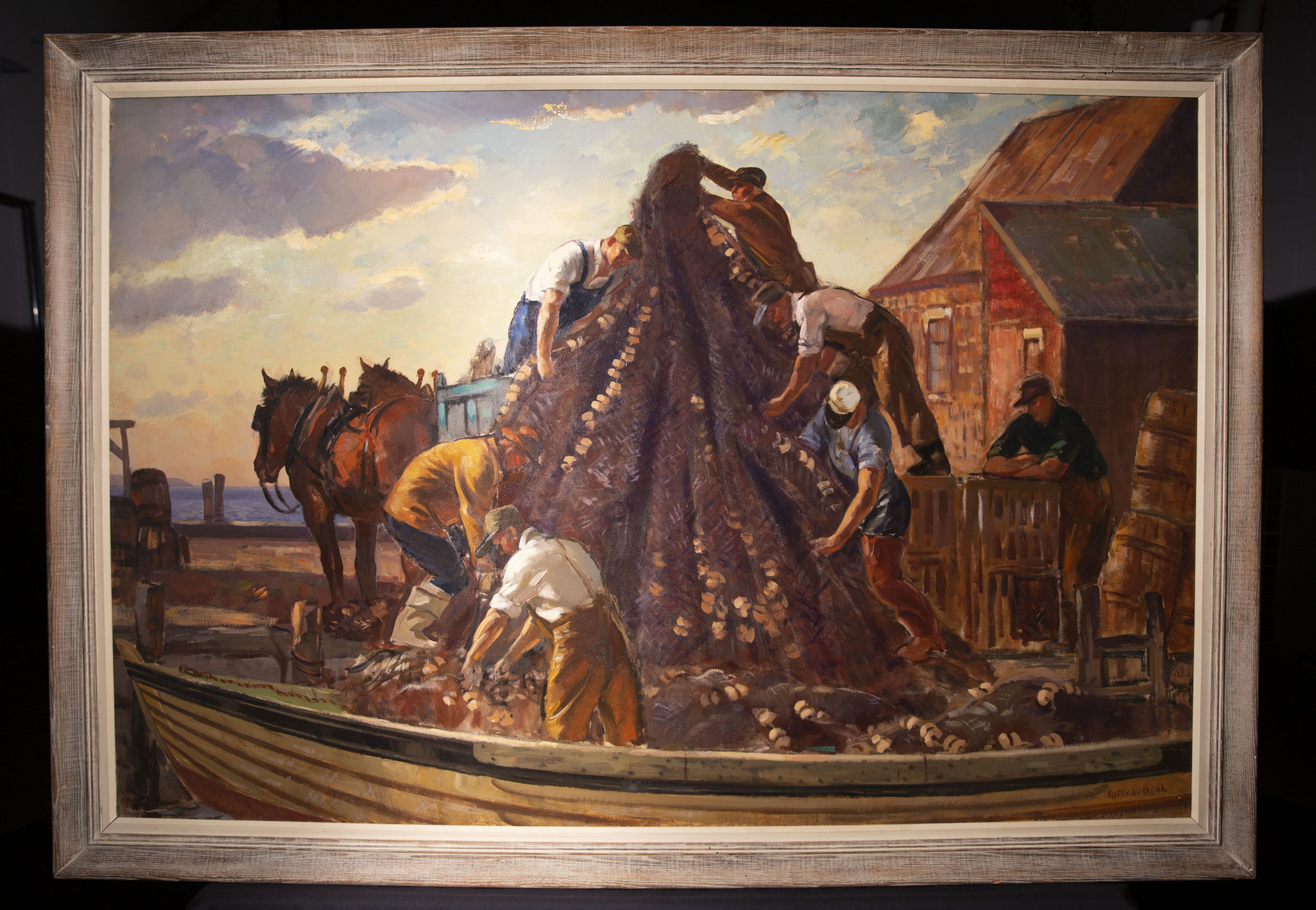
1977.0003.000001 | The Mariners’ Museum and Park
As the day slows and comes to a close, the final sunbeams dance across the canvas catching and illuminating the edges of figures that are still hard at work. These same figures were warmed and welcomed into the day by the very first of the sun’s rays.
Creating Unity
Much like the way these men work together towards a common goal, color, light, composition, and subject matter work together to create an overall harmonious feeling in the work. This feeling is one of unity, a core principle in art. In Gifford Beal’s ca. 1930 oil on canvas, “Hauling Nets” or “Piling Nets on a Wagon” the artist has created unity through the skillful use of all of these elements: color, light, composition, and especially subject matter.
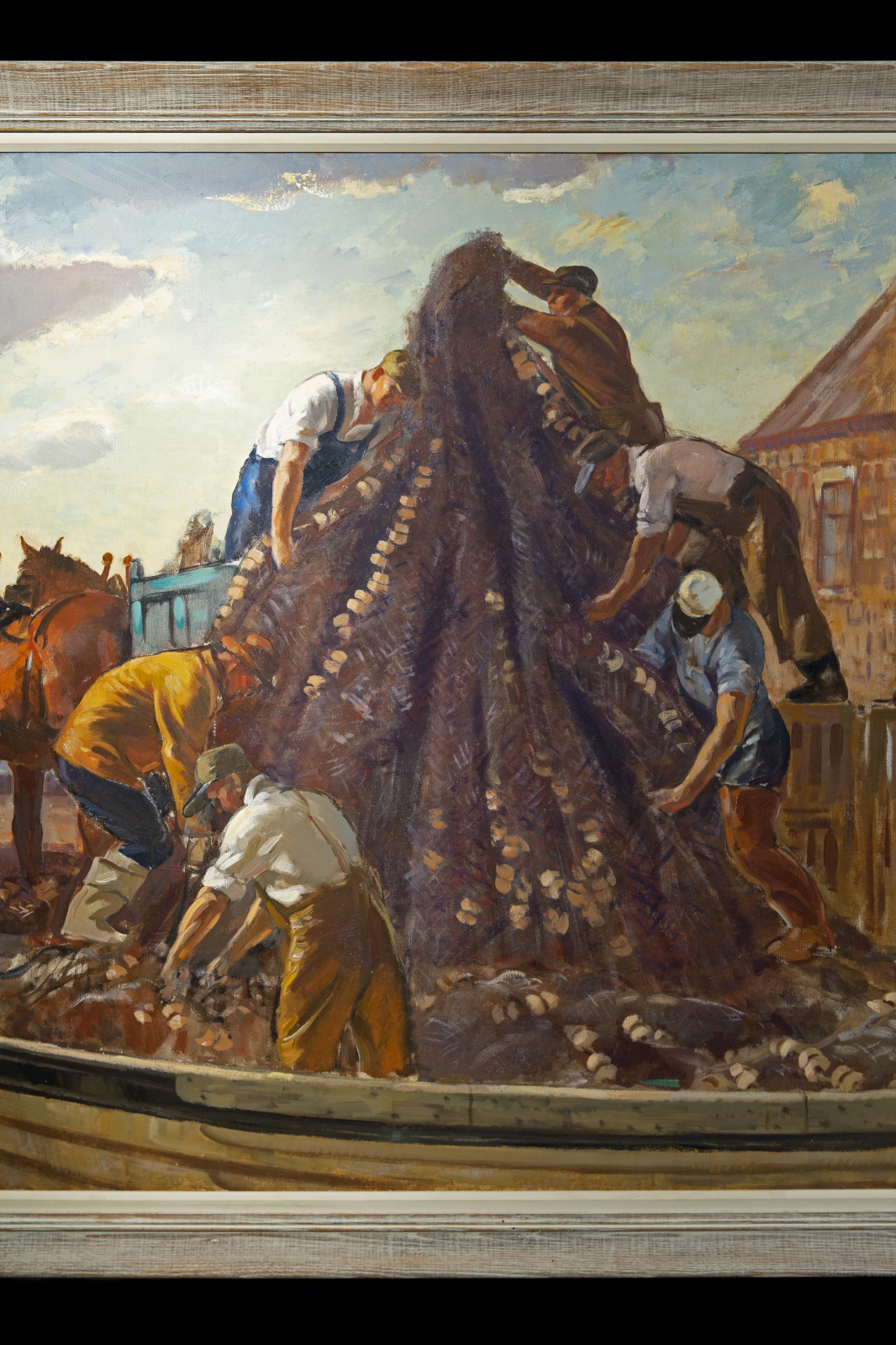
Organized Reality
We see these men, dockhands or fishermen working together to heave a mass of nets out of a boat in the foreground. Their strong, almost angular forms build a structure that harkens back to renaissance principles of composition. The use of Pyramidal composition is a classic way to create unity in a work of art, and in this work the pyramid of bodies and nets is centered almost perfectly on the canvas.
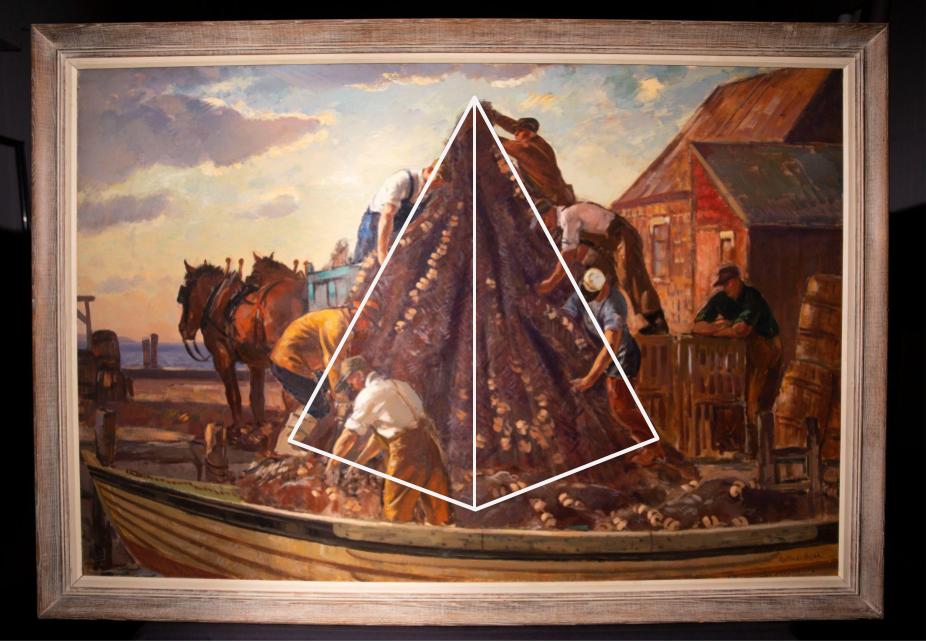
It’s then balanced on either side by the compositional weight of the horse and barrels on the left and the man leaning against a structure on the right as well as the building and barrels around him. This “organized reality” is something that Beal was known for.
The Artist, Gifford Beal
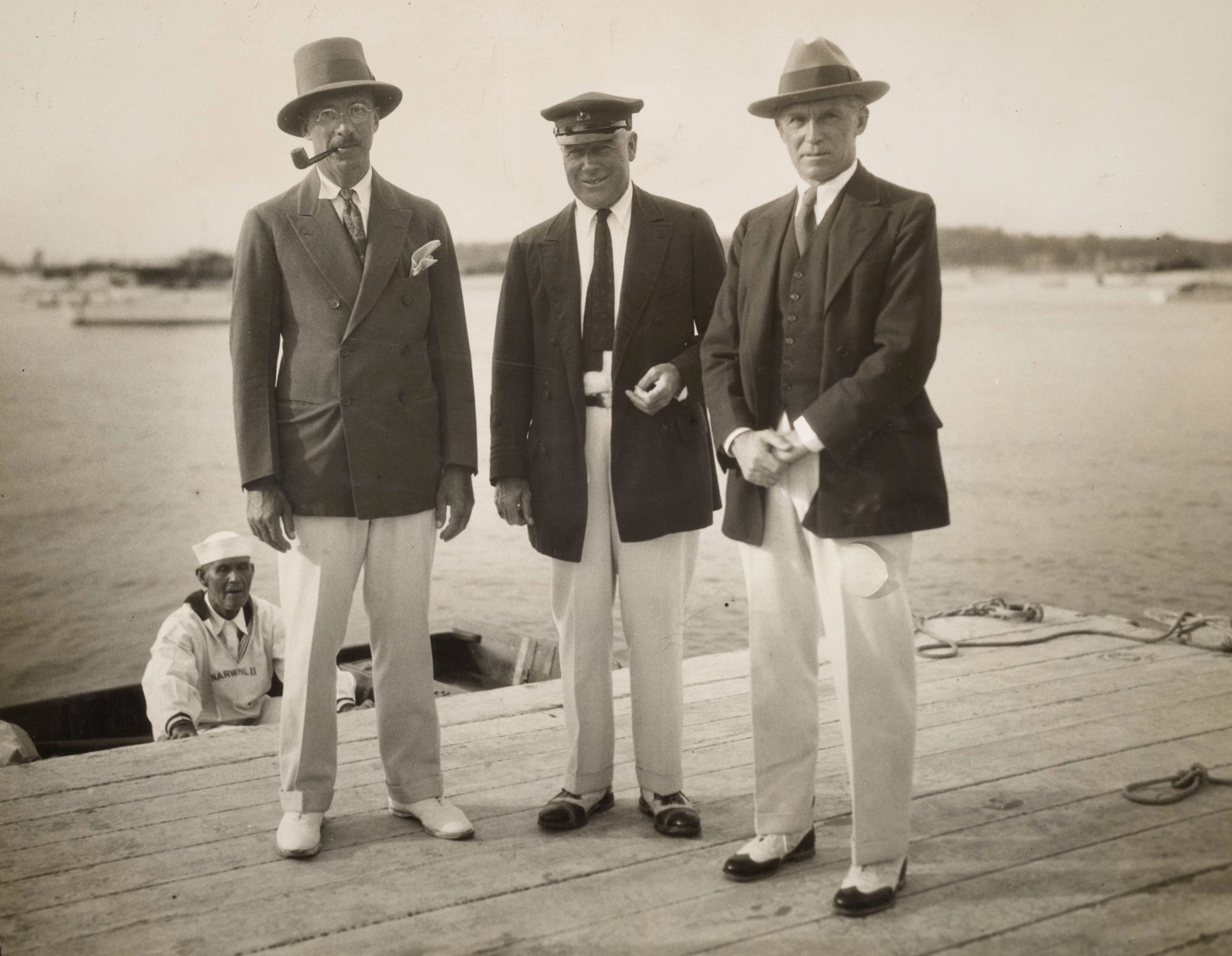
Gifford Beal was a celebrated American artist with a large number of maritime pieces. This is partly due to his love of watching the action of the workers at the wharfs in Rockport, Massachusetts. He would sit and study them throughout the day making countless sketches and etchings of their efforts.
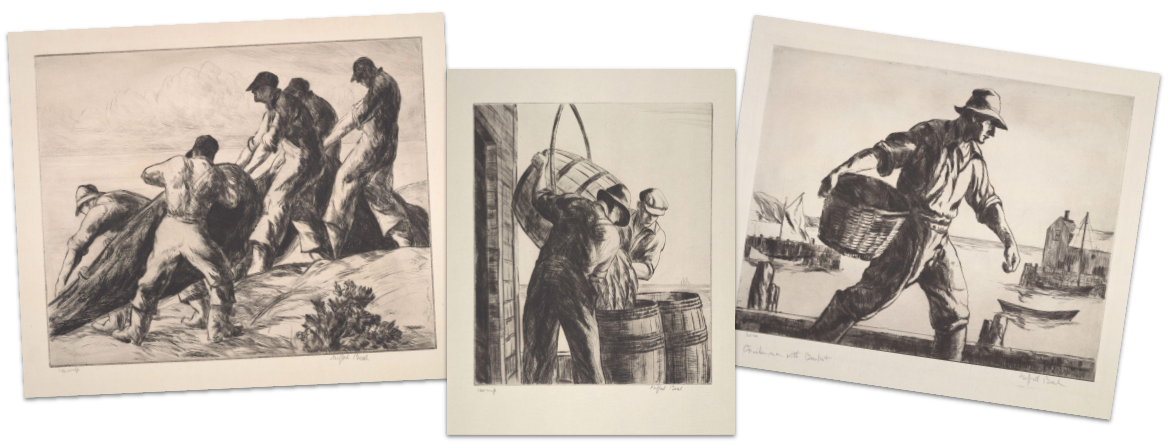
Hauling Nets – 1978.0017.000007,
Fish Bucket – 1978.0017.000001 , Fisherman with Basket – 1978.0017.000006
Beal found beauty in the everyday, in each moment. Moments of work, the curve of bodies, or the gestural billowing of a puff of smoke. He was a quiet man, but inherently a romantic. A friend of his, Barry Faulker, said,
“Gifford Beal was a painter who deeply felt the goodness of life and the tingling exhilaration of living, and he chose to depict life’s exuberant side not through the shallowness of nature nor ignorance of grief… He chose to paint the side of life upon which the sun hits…”
Upon Which the Sun Hits
In this work we see that outlook, very literally. The sun’s rays are warm and golden. They cast an ethereal glow over this scene of organized and elevated reality. We see the unison of bodies working together, companions laughing together, or sharing stories at the end of a long day. They radiate the exuberant energy of life.
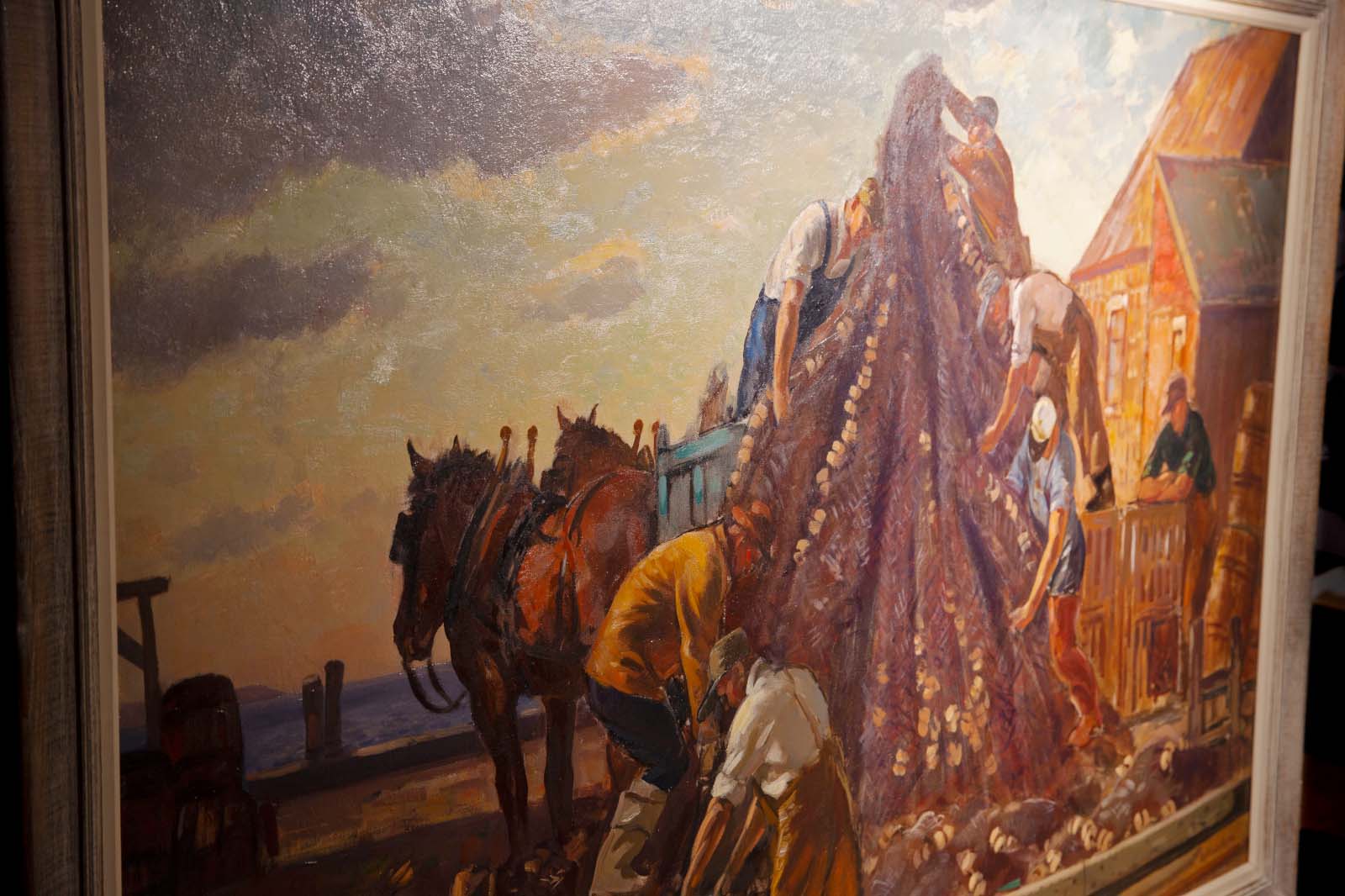
1977.0003.000001 | Brock Switzer/The Mariners’ Museum and Park
Beal has captured that energy and shares the contentment and beauty of this moment, this simple everyday moment, with us with the hopes that we, too, can see the side of life upon which the sun hits.
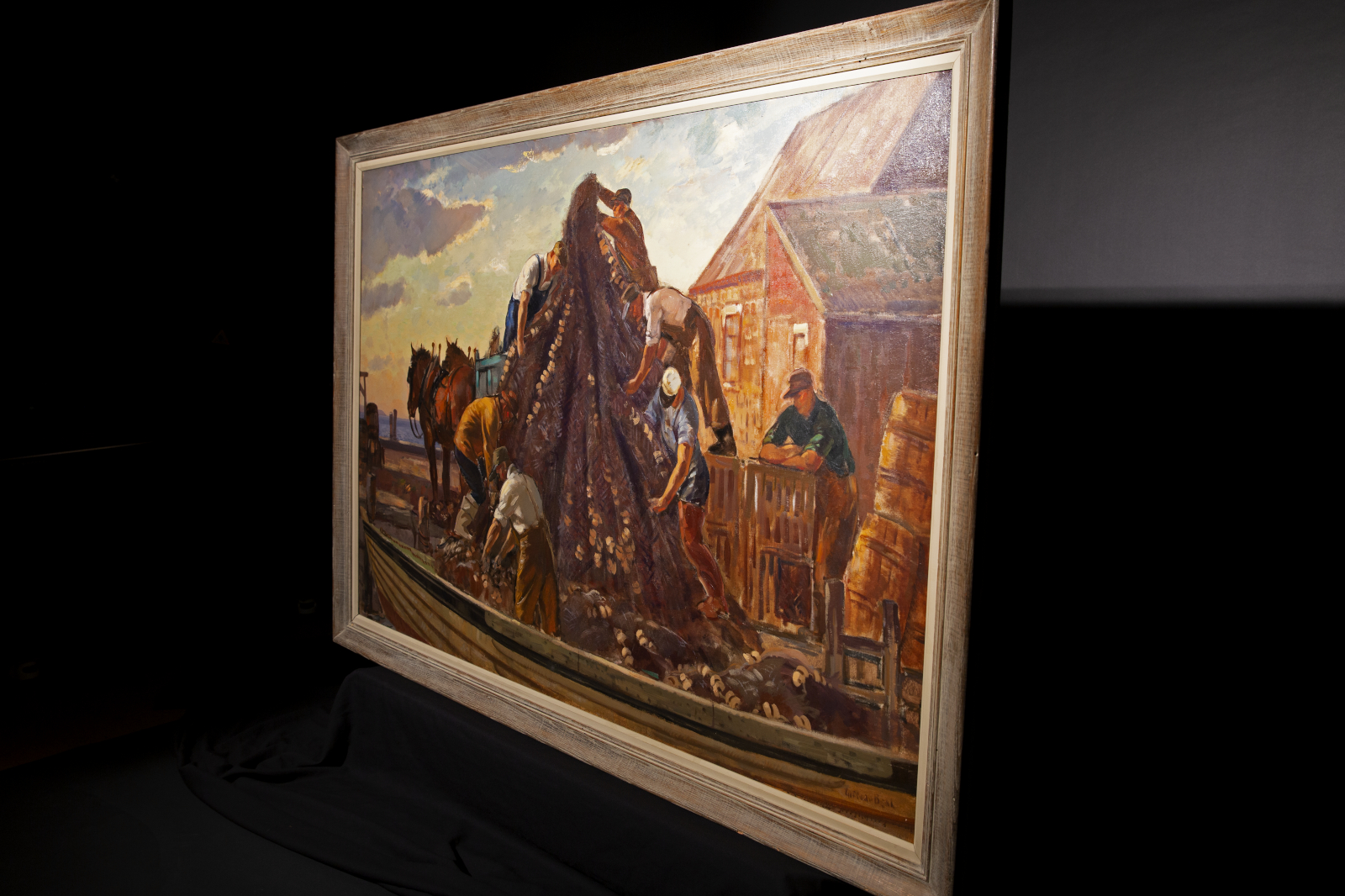
1977.0003.000001 | Brock Switzer/The Mariners’ Museum and Park
Be sure to watch the full episode here and stay tuned for new episodes the first Friday of each month!